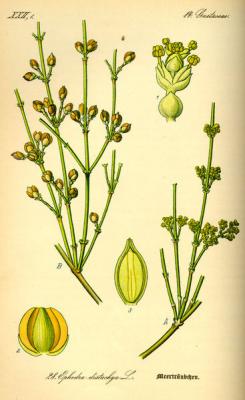|
N-methylpseudoephedrine
CAS number 51018-28-1
Synonyms: (+)-N-Methylpseudoephedrine,
(1S,2S)-2-Dimethylamino-1-phenylpropanol
![N-methylpseudoephedrine Formula: C6H5CH[CH(CH3)N(CH3)2]OH](http://www.tajapi.com/api%20images1/StructureFile_ChemBookStructure4_GIF_CB7321847.gif) CAS
Number: 51018-28-1 CAS
Number: 51018-28-1
Linear Formula: C6H5CH[CH(CH3)N(CH3)2]OH
Molecular Weight: 179.26
MDL number: MFCD00064260
PubChem Substance ID: 24857422
Properties
assay 99%
optical activity [α]21/D +48°, c = 5 in methanol
bp 145 °C/24 mmHg(lit.)
mp 29-31 °C(lit.)
Safety
Hazard Codes Xn
Risk Statements 20/21/22-36/37/38
Safety Statements 26-36
WGK Germany 3
Flash Point(F) 235 °F
Flash Point(C) 113 °C
Abstract
Treatment of (Image )-(η6-Image ,Image -dimethylamphetamine)Cr(CO)3,
with Image -butyllithium below -40°C gives a stable benzylic carbanion
Image loss of the Image -Image -benzylic proton. Warming of this anion
above -40°C gives (η6-Image -β-methylstyrene)Cr(CO)3 Image an ElcB type
elimination whilst trapping with an electrophile below -40°C gives
benzylically functionalised amphetamines with overall retention of
configuration.
The use of oxodiperoxymolybdenum(pyridine)hexamethylphosphoramide as the
electrophile gives optically pure (Image ,Image )-Image -methylpseudoephedrine
after decomplexation.
N-methylpseudoephedrineis a sympathomimetic agent, structurally similar
to ephedrine, used to relieve nasal and sinus congestion and reduce
air-travel-related otalgia in adults.
The salts pseudoephedrine hydrochloride and pseudoephedrine sulfate are
found in many over-the-counter preparations either as single-ingredient
preparations, or more commonly in combination with antihistamines and/or
paracetamol/ibuprofen.
Unlike antihistamines, which modify the systemic histamine-mediated
allergic response, pseudoephedrine only serves to relieve nasal
congestion commonly associated with colds or allergies.
The advantage of oral pseudoephedrine over topical nasal preparations,
such as oxymetazoline, is that it does not cause rebound congestion.
N-methylpseudoephedrineis acts directly on both alpha- and, to a lesser
degree, beta-adrenergic receptors.
Through direct action on alpha-adrenergic receptors in the mucosa of the
respiratory tract, pseudoephedrine produces vasoconstriction.
Pseudoephedrine relaxes bronchial smooth muscle by stimulating
beta2-adrenergic receptors.
Like ephedrine, pseudoephedrine releasing norepinephrine from its
storage sites, an indirect effect.
| |
|
Note /Government
Notification: These chemicals are designated as those that are used
in the manufacture of the controlled substances and are important to
the manufacture of the substances. For any (Control Substance)
products Import and Export *** subjected to your country government
laws /control substance ACT.
Information: The information on this web page is provided to help
you to work safely, but it is intended to be an overview of hazards,
not a replacement for a full Material Safety Data Sheet (MSDS). MSDS
forms can be downloaded from the web sites of many chemical
suppliers. ,also that the information on the PTCL Safety web site,
where this page was hosted, has been copied onto many other sites,
often without permission. If you have any doubts about the veracity
of the information that you are viewing, or have any queries, please
check the URL that your web browser displays for this page. If the
URL begins "www.tajapi.com/www/Denatonium Benzoate.htm/" the page is
maintained by the Safety Officer in Physical Chemistry at Oxford
University. If not, this page is a copy made by some other person
and we have no responsibility for it.
The Controlled Substances Act (CSA) was enacted into law by the
Congress of the United States as Title II of the Comprehensive Drug
Abuse Prevention and Control Act of 1970.[1] The CSA is the federal
U.S. drug policy under which the manufacture, importation,
possession, use and distribution of certain substances is regulated.
The Act also served as the national implementing legislation for the
Single Convention on Narcotic Drugs |
|
|
|
|



![N-methylpseudoephedrine Formula: C6H5CH[CH(CH3)N(CH3)2]OH](http://www.tajapi.com/api%20images1/StructureFile_ChemBookStructure4_GIF_CB7321847.gif) CAS
Number: 51018-28-1
CAS
Number: 51018-28-1



